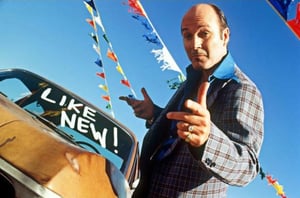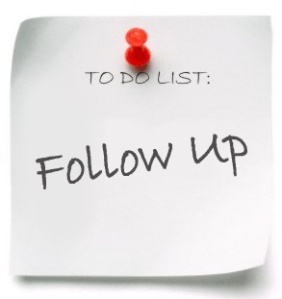.png?width=729&height=410&name=top%206%20ways%20TECH%20CEOS%20CAN%20ABSOLUTELY%20KILL%20IT%20DURING%20PRESS%20INTERVIEWS%20(1).png)
It's no secret that B2B spokespeople are usually quite technical and don't always see the “big picture” when communicating with the press. Many times the thought of doing a press interview for a founder or engineering, more technical senior spokesperson is daunting. They try to avoid it, pushing down the responsibility to marketing or others. But the fact of the matter is that the press wants to talk to the top dog - the person who can discuss vision, the industry, and the future of where their emerging technology is going.
So think of it this way: treat a press interview in the same way you would a job interview. First, you have to secure the interview, then deliver, and last but not least, follow through. 
We sat down with Red Javelin associate and press guru Neal Stein who shared these 6 six easy steps to overcome this challenge and absolutely kill it in your next press interview.
Step 1: Make Sure You Are Pitching The Right Reporter
In securing a press interview, it is crucial to know what the reporters are looking for so you don’t pitch the wrong reporter. I know it sounds simple, but you would be surprised how an easy step like this is often overlooked. For example, if you were representing a client in the tech industry, you wouldn’t want to pitch to a reporter that covers sports, SO DO YOUR RESEARCH! It is so important to research beforehand on the reporters that cover the industry you are focusing on. The best way to do research is online about who is writing on the topic of your client.
Step 2: Nobody Likes The Car Salesman Approach
 Once you have done your research on what reporter to pitch, you must remember to not shove information down the reporter’s throat. In other words, don’t sound like a car salesman. Come to the reporter in a way where you are helping them do their job in telling a story. Approach them with a unique angle that can help them tell their story in a different way. In doing this, you can subtly bring in your client's company which the reporter will respond much better than overwhelming them with information and telling them what to write about (your client).
Once you have done your research on what reporter to pitch, you must remember to not shove information down the reporter’s throat. In other words, don’t sound like a car salesman. Come to the reporter in a way where you are helping them do their job in telling a story. Approach them with a unique angle that can help them tell their story in a different way. In doing this, you can subtly bring in your client's company which the reporter will respond much better than overwhelming them with information and telling them what to write about (your client).
Step 3: Reporters Are Human Too, So Remind, Remind, Remind.
Just like us, reporters are human too with busy schedules, so it is important to remind them at least 24 hours in advance of the interview to confirm they will show up. Just as you would send a briefing document to your client, it’s also important to send this to the reporter as well. When you send them a quick email reminding them of the interview, you also might want to include a link to your client's bio, a relevant topic on their website, etc. This will make the reporter’s job easier in writing a good story by allowing them to ask better questions.
Step 4: Prepare To Ease Those Nerves
Just as reporters are, you are also human and it is normal to get nervous before a press interview. However, the best way to ease these nerves is to prepare your client as best as possible before the interview. Make sure you send your client the briefing document enough in advance, review the doc with them and give them any and all information they are going to need for the interview. It might even help to do practice or mock interviews with your client beforehand so they can go into the interview even more confident.
Step 5: Don’t Waste The Reporter’s Time
Reporters do not like surprises and do not have time to waste, so do yourself and them a favor and do not waste their time. It is important to make sure your client is not only prepared but also comfortable talking to the reporter on whatever the topic that may be. Also, when on a call with a reporter, you must make sure the PR person is always on the call to ensure everything is running smoothly and effectively in a timely fashion. This also helps ensure you do not waste the reporter’s time and gives your client a safety net if they get off track or something does not go as planned.
Step 6: Follow Through With The Follow-Up

Just as you would after a job interview, it’s crucial to make sure you follow up with the reporter within 24 hours after the interview. Send them an e-mail thanking them for their time, as well as including a quick recap on the topic you were discussing, which can include further screenshots or any more background information you think might be useful for them to have. You want the reporter to remember your client, so they always portray them in a positive manner. Thus, in addition to the previous five steps sending a quick thank you e-mail with will lock this in for your client.
Now come on, how simple are those six steps? Preparing, executing, and following up in a press interview can be very stressful, nerve- racking and many times, especially for B2B marketers, we tend to lose sight of the big picture. Following these easy steps will ensure you remember even the little things, like doing your research on the reporter ahead of time, to make sure you nail all your future press interviews.
You MUST be on you’re your A-game at all times to ensure you are effectively personifying the brand you are representing.



